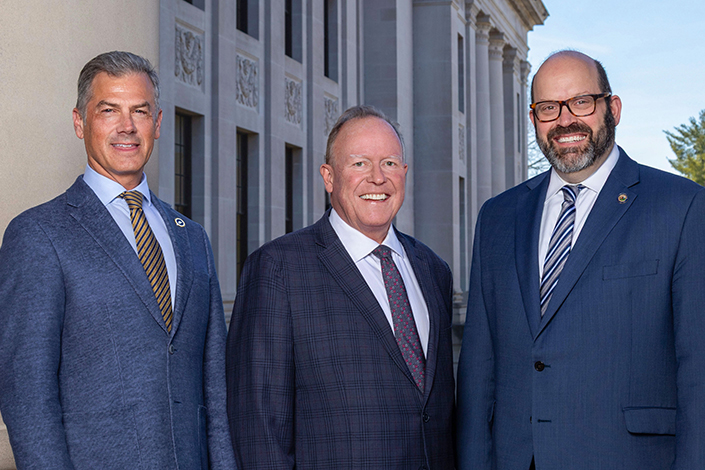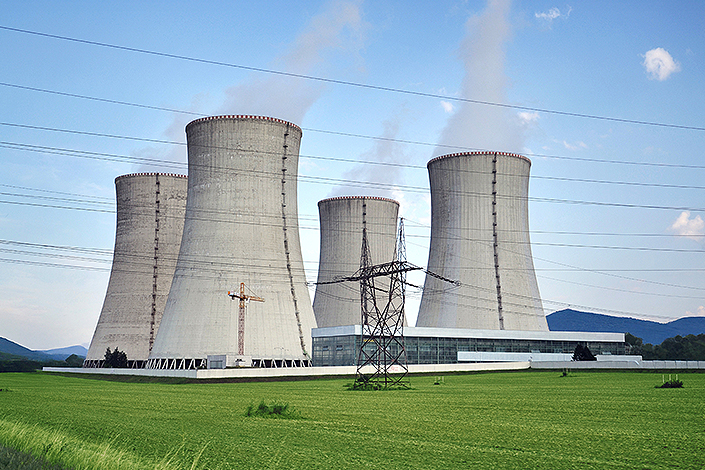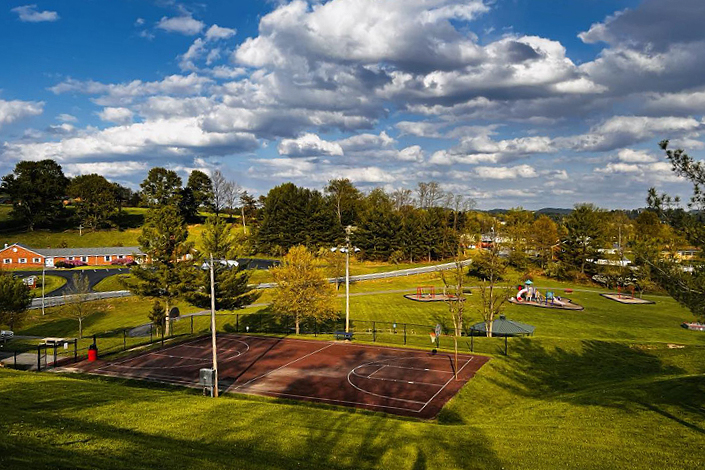The Next Era of Development
By Megan Bevins

West Virginia has long been known for its natural beauty, rich history and strong communities. Now, on the verge of a significant transformation, the Mountain State is using that vibrant spirit to advance its economic landscape. Through the hard work of resilient leaders and residents, the state is becoming the blueprint for others to achieve strategic growth through collaboration and innovation and attain long-term sustainability.
Today’s approach to development differs from years past, focusing more on aligning opportunity and workforce, preparing sites to best serve the state’s needs and properly leveraging capital. While West Virginia is still working to achieve its development goals, the state is no longer waiting to be discovered, instead paving its own way to a prosperous future.
With experience in health care, entrepreneurship, technology, government relations and board leadership for national brands, Matt Herridge, secretary of commerce for the West Virginia Department of Commerce, has seen firsthand how success can grow from teamwork and a shared vision.
Having worked as a psychologist before transitioning into the business world, Herridge’s training has helped him learn how to navigate this new sector, especially when conducting negotiations and understanding human emotions. His psychology training has also helped give him valuable insights into the challenges West Virginia faces, particularly in areas such as motivating change and improving workforce participation.
Herridge describes the state’s economic growth as moving in three ordinate directions: retaining businesses, expanding upon those businesses and bringing in new businesses. This three-pronged strategy helps ensure the state is primed for future advancements, sees steady job growth and is set up for outside investments.
“I do believe there’s been a lot of work to prime us, and that has primarily been around investing in current businesses and making them stronger, but at the same time looking for sites that are shovel ready and attracting other businesses to use them,” Herridge says.
While economic development relies heavily on investments and other monetary aspects, Herridge says that people, skills and mindsets matter just as much when developing the state.
“Growth happens when businesses see opportunity and when people see a future,” he says. “That’s why we’re committed to making West Virginia a place where companies want to expand and where young talent chooses to stay. The key is showing them—not just telling them—the real opportunities that exist here.”
This includes seeking out people with skilled trades, such as engineers, electricians and plumbers, who can be trained at nearby vocational centers and employed in the state’s energy sector, which is currently especially attractive to new businesses.
“How do we take students and expose them to some opportunities within this digital world that can create careers for them?” Herridge asks. “I think it’s working closely with our universities, career centers and vocational centers to develop them.”
When new businesses do settle down in the Mountain State and need to hire multiple employees, Herridge says the Department of Commerce and West Virginia Department of Economic Development (WVDED) implement certain strategies, such as a rapid response approach to closings, to help in the recruitment process. This approach involves reaching out to individuals coming from companies that shut down to connect them with these new opportunities.
“We’re collaborating with our workforce team relative to job openings and needs to evaluate how we can help direct people and companies toward each other after these situations,” Herridge says.
Another stepping stone to attracting people to live and work in West Virginia is expanding its affordable housing options. Herridge explains that as housing is currently in a difficult spot in the state, new incentives for builders to create more residential facilities may help.
He specifically mentions the Build WV Act—a program that provides tax incentives to developers for building affordable housing in designated areas of West Virginia—and the benefits of its expansion across the state.
“We want to incent builders everywhere in the state of West Virginia, and that could be something that could be expanded,” Herridge says. “The good news is most of those regions cover a great part of the population density right now.”
With a law degree and master’s in energy policy, Nicholas Preservati, deputy secretary of the Department of Commerce, has more than 25 years of experience as a C-suite executive, general counsel and litigator in the energy sector. He has defended major energy clients, managed complex litigation and advised lawmakers on energy policy. His work also includes drafting key state statutes that shape energy law.
Through his additional role as vice chair of the West Virginia Public Energy Authority, he helps drive the state’s energy strategy. He has built a global network of energy experts, giving him broad insight into both national and international energy issues.
Preservati puts a large emphasis on energy harboring much of the state’s potential for growth and describes West Virginia’s energy sector as being built on two pillars—intermittent and baseload generation.
“While intermittent sources like solar, wind and hydro add diversity, baseload energy—especially coal, natural gas and nuclear—ensures continuous, reliable power regardless of weather conditions,” Preservati says. “Coal, in particular, is critical for grid reliability during peak demand and extreme weather events.”
Preservati identifies microgrids for data centers—which utilize West Virginia’s abundance of energy sources—as being a potential economic driver for the state. These microgrids aren’t connected to any larger energy grid and allow independent power production, meaning their implementation would make the Mountain State a popular destination for data centers.
“West Virginia is going to meet at the intersection of energy and technology,” he says. “I think you’re seeing that between the data centers and the energy sector, that’s our path forward.”
The new data centers would also bring revenue from property taxes that will benefit communities. Based on the value of the data center, the town would have the potential to earn billions of dollars that can be put back into the area.
Abandoned mine sites are being considered as locations for the potential new data centers. With the sites already housing electricity infrastructure and flattened land, developers would have the perfect foundation to expand the centers to West Virginia.
Preservati says there are a myriad of additional uses for locations like these as well. Housing, residential areas, retail establishments and industrial and manufacturing facilities are just a few examples.
“There are all kinds of opportunities to utilize that land,” he says. “We just have to get out in front of that when that mine permit is filed and say, ‘Hey, we want to use this mine site for some kind of development,’ so they won’t have to go through the full reclamation process.”
A bill proposing the merger of the West Virginia Department of Commerce and the WVDED passed through the Legislature in the 2025 session, a move that could significantly smoothen operations and strengthen communication between leaders in the state’s economic landscape.
The merger will help to eliminate redundant responsibilities and reduce costs. This will also help the state better allocate resources and ensure that its assets are being used in the most productive ways possible. With the alignment of the two departments, carrying out tasks that will strengthen West Virginia’s economy could become much less complicated.
“I think it just makes things flow better,” Preservati says. “The key is just trying to be more efficient, and efficiency doesn’t always mean saving tons and tons of dollars. It also means saving time, which will indirectly save money.”
Mike Graney, executive director of the WVDED, has had a career defined by hands-on leadership across a variety of industries, including petroleum, retail, acquisition, construction, finance, administration and environmental compliance. With his extensive experience, Graney is fully equipped to support economic development efforts in the Mountain State.
Graney also has an active involvement in community service, which has shown him first-hand the importance of staying involved at a local level and how important a town’s communities are to its ability to thrive.
Graney says over the years he has seen a shift in the narrative toward economic development. He has witnessed entities within the state go from competing, complaining and criticizing to cooperating, collaborating and communicating. This means organizations are starting to work with and support each other for the betterment of the state.
“West Virginia is small, and we all know each other,” Graney says. “It makes us very nimble. We can react quickly, and that makes us mighty. We win projects over bigger states because we return phone calls within three minutes, and when somebody needs to get the governor’s cabinet together, it’s done.”
Graney mentions the state’s work with industry leaders like Nucor Steel West Virginia, LG NOVA, Form Energy, CMC Metals, Toyota, Niterra, Procter & Gamble and Clorox, saying these collaborations are the perfect demonstration of the diversity, strength and opportunity for West Virginia.
“By partnering with local industries and educational institutions, we’re developing specialized workforce training programs that meet the evolving needs of our economy,” he says. “These initiatives ensure that our workers are equipped to excel in high-demand fields, driving long-term prosperity and positioning West Virginia as a leader in economic growth.”
Community support is not just beneficial for sustainable economic growth; it is essential. The most impactful developments are those embraced at the local level, where residents, business owners and stakeholders are invested in their success. Graney says no project can succeed without the approval and backing of those it is going to serve.
As each community has its own unique challenges and priorities, every new development must be sure to fit within that framework. Graney emphasizes that understanding this is crucial and what works in one town may not work in another.
“Economic development is complicated on many different levels,” he says. “It truly takes local, state and often federal resources to make projects happen, and you need the involvement and the support of the local economic developers and communities to support any activity that might happen there. If it’s something they don’t want, it’s not going to happen.”
The WVDED works to accomplish this by sending business retention and expansion representatives to meet with operators, customers and industrial companies within those communities to assess their needs and how the department may be able to assist them.
Graney says that, at the moment, much of the state’s current economic development comes from the expansion of existing businesses. He uses Toyota as an example, as the company has been in West Virginia for 25 years and has expanded 12 different times.
“Each one of those expansions was a competition with another Toyota manufacturing facility,” he says. “So, we’ve won 12 projects in the 25 years they’ve been here because Toyota values the Putnam County workforce greatly.”
There are currently 44 local economic development authorities in West Virginia, some conducting multi-county operations. Examples are the New River Gorge Regional Development Authority, which includes Summers, Raleigh, Fayette and Nicholas counties, and the Greenbrier Valley Economic Development Corporation, which includes Greenbrier, Monroe and Pocahontas counties.
Graney notes that the WVDED actively encourages this kind of collaboration, as it often leads to greater funding opportunities and enhanced operational capacity. He also emphasizes that it is important for new businesses or entities moving or expanding to West Virginia to work directly with the local economic development authority in their chosen region.
West Virginia’s path forward becomes clearer as it continues to build strategic partnerships, strong leadership and a renewed sense of unity. With its breakthroughs in community revitalization, innovation and workforce empowerment, the state is proving that positive, sustainable growth is well within reach.
Economic development in West Virginia is not just a goal but a commitment to its people. Set with a strong foundation, the state continues to progress forward and become an example to others of what can be achieved with hard work, purpose and a clear goal of making your home a better place to live, work and thrive.







